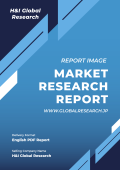Table of Contents
Chapter 1. Global Carbon-negative Plastics Market Report Scope & Methodology
1.1. Research Objective
1.2. Research Methodology
1.2.1. Forecast Model
1.2.2. Desk Research
1.2.3. Top-Down and Bottom-Up Approach
1.3. Research Attributes
1.4. Scope of the Study
1.4.1. Market Definition
1.4.2. Market Segmentation
1.5. Research Assumptions
1.5.1. Inclusion & Exclusion
1.5.2. Limitations
1.5.3. Years Considered for the Study
Chapter 2. Executive Summary
2.1. CEO/CXO Standpoint
2.2. Strategic Insights
2.3. ESG Analysis
2.4. Key Findings
Chapter 3. Global Carbon-negative Plastics Market Forces Analysis (2024–2035)
3.1. Market Forces Shaping the Global Carbon-negative Plastics Market
3.2. Drivers
3.2.1. Stringent Environmental Regulations & Carbon Pricing
3.2.2. Rising Consumer & Investor ESG Awareness
3.2.3. Incentives for Circular Economy Practices
3.3. Restraints
3.3.1. High Production & Feedstock Costs
3.3.2. Scalability & Technology Maturation Challenges
3.4. Opportunities
3.4.1. Advances in Biopolymer R&D
3.4.2. Integration of Direct Air Capture (DAC) Technologies
Chapter 4. Global Carbon-negative Plastics Industry Analysis
4.1. Porter’s Five Forces Model
4.1.1. Bargaining Power of Buyers
4.1.2. Bargaining Power of Suppliers
4.1.3. Threat of New Entrants
4.1.4. Threat of Substitutes
4.1.5. Competitive Rivalry
4.2. Porter’s Five Forces Forecast Model (2024–2035)
4.3. PESTEL Analysis
4.3.1. Political
4.3.2. Economic
4.3.3. Social
4.3.4. Technological
4.3.5. Environmental
4.3.6. Legal
4.4. Top Investment Opportunities
4.5. Top Winning Strategies (2025)
4.6. Market Share Analysis (2024–2025)
4.7. Global Pricing Analysis and Trends (2025)
4.8. Analyst Recommendations & Conclusion
Chapter 5. Global Carbon-negative Plastics Market Size & Forecasts by Product Type (2025–2035)
5.1. Market Overview
5.2. PE (Polyethylene)
5.2.1. Regional Breakdown & Forecasts, 2025–2035
5.3. PP (Polypropylene)
5.3.1. Regional Breakdown & Forecasts, 2025–2035
5.4. EVA (Ethylene Vinyl Acetate)
5.4.1. Regional Breakdown & Forecasts, 2025–2035
Chapter 6. Global Carbon-negative Plastics Market Size & Forecasts by End-use (2025–2035)
6.1. Market Overview
6.2. Packaging
6.2.1. Regional Breakdown & Forecasts, 2025–2035
6.3. Automotive Components
6.3.1. Regional Breakdown & Forecasts, 2025–2035
6.4. Construction Materials
6.4.1. Regional Breakdown & Forecasts, 2025–2035
Chapter 7. Global Carbon-negative Plastics Market Size & Forecasts by Region (2025–2035)
7.1. Market Snapshot by Region
7.2. Top Leading & Emerging Countries
7.3. North America
7.3.1. U.S.
7.3.1.1. Product Type Breakdown, 2025–2035
7.3.1.2. End-use Breakdown, 2025–2035
7.3.2. Canada
7.3.2.1. Product Type Breakdown, 2025–2035
7.3.2.2. End-use Breakdown, 2025–2035
7.4. Europe
7.4.1. UK
7.4.1.1. Product Type Breakdown, 2025–2035
7.4.1.2. End-use Breakdown, 2025–2035
7.4.2. Germany
7.4.2.1. Product Type Breakdown, 2025–2035
7.4.2.2. End-use Breakdown, 2025–2035
7.4.3. France
7.4.3.1. Product Type Breakdown, 2025–2035
7.4.3.2. End-use Breakdown, 2025–2035
7.4.4. Spain
7.4.4.1. Product Type Breakdown, 2025–2035
7.4.4.2. End-use Breakdown, 2025–2035
7.4.5. Italy
7.4.5.1. Product Type Breakdown, 2025–2035
7.4.5.2. End-use Breakdown, 2025–2035
7.4.6. Rest of Europe
7.4.6.1. Product Type Breakdown, 2025–2035
7.4.6.2. End-use Breakdown, 2025–2035
7.5. Asia Pacific
7.5.1. China
7.5.1.1. Product Type Breakdown, 2025–2035
7.5.1.2. End-use Breakdown, 2025–2035
7.5.2. India
7.5.2.1. Product Type Breakdown, 2025–2035
7.5.2.2. End-use Breakdown, 2025–2035
7.5.3. Japan
7.5.3.1. Product Type Breakdown, 2025–2035
7.5.3.2. End-use Breakdown, 2025–2035
7.5.4. Australia
7.5.4.1. Product Type Breakdown, 2025–2035
7.5.4.2. End-use Breakdown, 2025–2035
7.5.5. South Korea
7.5.5.1. Product Type Breakdown, 2025–2035
7.5.5.2. End-use Breakdown, 2025–2035
7.5.6. Rest of Asia Pacific
7.5.6.1. Product Type Breakdown, 2025–2035
7.5.6.2. End-use Breakdown, 2025–2035
7.6. Latin America
7.6.1. Brazil
7.6.1.1. Product Type Breakdown, 2025–2035
7.6.1.2. End-use Breakdown, 2025–2035
7.6.2. Mexico
7.6.2.1. Product Type Breakdown, 2025–2035
7.6.2.2. End-use Breakdown, 2025–2035
7.7. Middle East & Africa
7.7.1. UAE
7.7.1.1. Product Type Breakdown, 2025–2035
7.7.1.2. End-use Breakdown, 2025–2035
7.7.2. Saudi Arabia
7.7.2.1. Product Type Breakdown, 2025–2035
7.7.2.2. End-use Breakdown, 2025–2035
7.7.3. South Africa
7.7.3.1. Product Type Breakdown, 2025–2035
7.7.3.2. End-use Breakdown, 2025–2035
7.7.4. Rest of Middle East & Africa
7.7.4.1. Product Type Breakdown, 2025–2035
7.7.4.2. End-use Breakdown, 2025–2035
Chapter 8. Competitive Intelligence
8.1. Top Market Strategies
8.2. BASF SE
• Company Overview
• Key Executives
• Company Snapshot
• Financial Performance (Subject to Data Availability)
• Product/Services Portfolio
• Recent Developments
• Market Strategies
• SWOT Analysis
8.3. Shell plc
8.4. Covestro AG
8.5. Braskem S.A.
8.6. Sabic
8.7. Dow Inc.
8.8. Solvay S.A.
8.9. TotalEnergies SE
8.10. Neste Oyj
8.11. Avantium N.V.
8.12. Origin Materials
8.13. Biome Bioplastics
8.14. Carbon Clean
8.15. Novomer, Inc.
8.16. Danimer Scientific
List of Tables
Table 1. Global Carbon-negative Plastics Market, Report Scope
Table 2. Global Market Estimates & Forecasts by Region, 2024–2035
Table 3. Global Market Estimates & Forecasts by Product Type, 2024–2035
Table 4. Global Market Estimates & Forecasts by End-use, 2024–2035
Table 5. North America Market Estimates & Forecasts, 2024–2035
Table 6. Europe Market Estimates & Forecasts, 2024–2035
Table 7. Asia Pacific Market Estimates & Forecasts, 2024–2035
Table 8. Latin America Market Estimates & Forecasts, 2024–2035
Table 9. Middle East & Africa Market Estimates & Forecasts, 2024–2035
Table 10. Company Market Share Analysis (2025)
List of Figures
Fig. 1. Research Methodology
Fig. 2. Market Estimation Techniques
Fig. 3. Global Size Estimates & Forecast Methods
Fig. 4. Key Trends (2025)
Fig. 5. Growth Prospects, 2024–2035
Fig. 6. Porter’s Five Forces Model
Fig. 7. PESTEL Analysis
Fig. 8. Value Chain Analysis
Fig. 9. Market by Product Type, 2025 & 2035
Fig. 10. Market by End-use, 2025 & 2035
Fig. 11. North America Market, 2025 & 2035
Fig. 12. Europe Market, 2025 & 2035
Fig. 13. Asia Pacific Market, 2025 & 2035
Fig. 14. Latin America Market, 2025 & 2035
Fig. 15. Middle East & Africa Market, 2025 & 2035
Fig. 16. Company Market Share Analysis (2025)
Chapter 1. Global Carbon-negative Plastics Market Report Scope & Methodology
1.1. Research Objective
1.2. Research Methodology
1.2.1. Forecast Model
1.2.2. Desk Research
1.2.3. Top-Down and Bottom-Up Approach
1.3. Research Attributes
1.4. Scope of the Study
1.4.1. Market Definition
1.4.2. Market Segmentation
1.5. Research Assumptions
1.5.1. Inclusion & Exclusion
1.5.2. Limitations
1.5.3. Years Considered for the Study
Chapter 2. Executive Summary
2.1. CEO/CXO Standpoint
2.2. Strategic Insights
2.3. ESG Analysis
2.4. Key Findings
Chapter 3. Global Carbon-negative Plastics Market Forces Analysis (2024–2035)
3.1. Market Forces Shaping the Global Carbon-negative Plastics Market
3.2. Drivers
3.2.1. Stringent Environmental Regulations & Carbon Pricing
3.2.2. Rising Consumer & Investor ESG Awareness
3.2.3. Incentives for Circular Economy Practices
3.3. Restraints
3.3.1. High Production & Feedstock Costs
3.3.2. Scalability & Technology Maturation Challenges
3.4. Opportunities
3.4.1. Advances in Biopolymer R&D
3.4.2. Integration of Direct Air Capture (DAC) Technologies
Chapter 4. Global Carbon-negative Plastics Industry Analysis
4.1. Porter’s Five Forces Model
4.1.1. Bargaining Power of Buyers
4.1.2. Bargaining Power of Suppliers
4.1.3. Threat of New Entrants
4.1.4. Threat of Substitutes
4.1.5. Competitive Rivalry
4.2. Porter’s Five Forces Forecast Model (2024–2035)
4.3. PESTEL Analysis
4.3.1. Political
4.3.2. Economic
4.3.3. Social
4.3.4. Technological
4.3.5. Environmental
4.3.6. Legal
4.4. Top Investment Opportunities
4.5. Top Winning Strategies (2025)
4.6. Market Share Analysis (2024–2025)
4.7. Global Pricing Analysis and Trends (2025)
4.8. Analyst Recommendations & Conclusion
Chapter 5. Global Carbon-negative Plastics Market Size & Forecasts by Product Type (2025–2035)
5.1. Market Overview
5.2. PE (Polyethylene)
5.2.1. Regional Breakdown & Forecasts, 2025–2035
5.3. PP (Polypropylene)
5.3.1. Regional Breakdown & Forecasts, 2025–2035
5.4. EVA (Ethylene Vinyl Acetate)
5.4.1. Regional Breakdown & Forecasts, 2025–2035
Chapter 6. Global Carbon-negative Plastics Market Size & Forecasts by End-use (2025–2035)
6.1. Market Overview
6.2. Packaging
6.2.1. Regional Breakdown & Forecasts, 2025–2035
6.3. Automotive Components
6.3.1. Regional Breakdown & Forecasts, 2025–2035
6.4. Construction Materials
6.4.1. Regional Breakdown & Forecasts, 2025–2035
Chapter 7. Global Carbon-negative Plastics Market Size & Forecasts by Region (2025–2035)
7.1. Market Snapshot by Region
7.2. Top Leading & Emerging Countries
7.3. North America
7.3.1. U.S.
7.3.1.1. Product Type Breakdown, 2025–2035
7.3.1.2. End-use Breakdown, 2025–2035
7.3.2. Canada
7.3.2.1. Product Type Breakdown, 2025–2035
7.3.2.2. End-use Breakdown, 2025–2035
7.4. Europe
7.4.1. UK
7.4.1.1. Product Type Breakdown, 2025–2035
7.4.1.2. End-use Breakdown, 2025–2035
7.4.2. Germany
7.4.2.1. Product Type Breakdown, 2025–2035
7.4.2.2. End-use Breakdown, 2025–2035
7.4.3. France
7.4.3.1. Product Type Breakdown, 2025–2035
7.4.3.2. End-use Breakdown, 2025–2035
7.4.4. Spain
7.4.4.1. Product Type Breakdown, 2025–2035
7.4.4.2. End-use Breakdown, 2025–2035
7.4.5. Italy
7.4.5.1. Product Type Breakdown, 2025–2035
7.4.5.2. End-use Breakdown, 2025–2035
7.4.6. Rest of Europe
7.4.6.1. Product Type Breakdown, 2025–2035
7.4.6.2. End-use Breakdown, 2025–2035
7.5. Asia Pacific
7.5.1. China
7.5.1.1. Product Type Breakdown, 2025–2035
7.5.1.2. End-use Breakdown, 2025–2035
7.5.2. India
7.5.2.1. Product Type Breakdown, 2025–2035
7.5.2.2. End-use Breakdown, 2025–2035
7.5.3. Japan
7.5.3.1. Product Type Breakdown, 2025–2035
7.5.3.2. End-use Breakdown, 2025–2035
7.5.4. Australia
7.5.4.1. Product Type Breakdown, 2025–2035
7.5.4.2. End-use Breakdown, 2025–2035
7.5.5. South Korea
7.5.5.1. Product Type Breakdown, 2025–2035
7.5.5.2. End-use Breakdown, 2025–2035
7.5.6. Rest of Asia Pacific
7.5.6.1. Product Type Breakdown, 2025–2035
7.5.6.2. End-use Breakdown, 2025–2035
7.6. Latin America
7.6.1. Brazil
7.6.1.1. Product Type Breakdown, 2025–2035
7.6.1.2. End-use Breakdown, 2025–2035
7.6.2. Mexico
7.6.2.1. Product Type Breakdown, 2025–2035
7.6.2.2. End-use Breakdown, 2025–2035
7.7. Middle East & Africa
7.7.1. UAE
7.7.1.1. Product Type Breakdown, 2025–2035
7.7.1.2. End-use Breakdown, 2025–2035
7.7.2. Saudi Arabia
7.7.2.1. Product Type Breakdown, 2025–2035
7.7.2.2. End-use Breakdown, 2025–2035
7.7.3. South Africa
7.7.3.1. Product Type Breakdown, 2025–2035
7.7.3.2. End-use Breakdown, 2025–2035
7.7.4. Rest of Middle East & Africa
7.7.4.1. Product Type Breakdown, 2025–2035
7.7.4.2. End-use Breakdown, 2025–2035
Chapter 8. Competitive Intelligence
8.1. Top Market Strategies
8.2. BASF SE
• Company Overview
• Key Executives
• Company Snapshot
• Financial Performance (Subject to Data Availability)
• Product/Services Portfolio
• Recent Developments
• Market Strategies
• SWOT Analysis
8.3. Shell plc
8.4. Covestro AG
8.5. Braskem S.A.
8.6. Sabic
8.7. Dow Inc.
8.8. Solvay S.A.
8.9. TotalEnergies SE
8.10. Neste Oyj
8.11. Avantium N.V.
8.12. Origin Materials
8.13. Biome Bioplastics
8.14. Carbon Clean
8.15. Novomer, Inc.
8.16. Danimer Scientific
❖ 免責事項 ❖
http://www.globalresearch.jp/disclaimer












